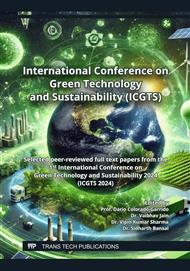p.3
p.15
p.21
p.29
p.47
p.53
p.67
p.79
Driving towards the Future: A Comprehensive Analysis of Plasma Thruster Developments
Abstract:
Ion thrusters have established themselves as a reliable and effective replacement for traditional propulsion systems. Even though they create a significantly less thrust than chemical propulsion systems, ion thrusters may readily compete because of their extremely high specific impulse output and very low fuel consumption. The system is applicable to a wide range of mission requirements, including multi-goal missions, orbit and attitude controlling, and orbit station keeping for geostationary satellites. Even though chemical propulsion is a poor choice for deep space missions, ion thrusters are enabling missions to travel ten times farther into deep space. The aim of this paper is to provides a concise overview of electric propulsion technologies, concentrating on the development and functionality of the Ion Thruster. Keywords: Plasma thruster, Propellent, Plasma Physics
Info:
Periodical:
Pages:
15-19
Citation:
Online since:
August 2025
Keywords:
Price:
Сopyright:
© 2025 Trans Tech Publications Ltd. All Rights Reserved
Share:
Citation:


